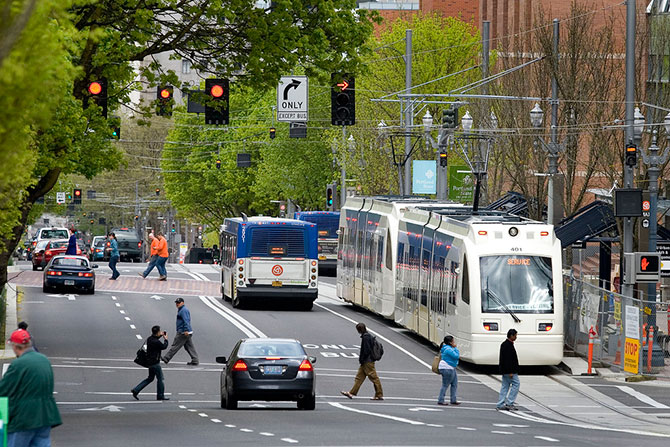How much extra would you be willing to pay to live near rail transit?
For Minneapolis residents along the Hiawatha rail line, that convenience is worth tacking on an additional 10 percent to housing prices. Chicagoans near the Midway transit line are willing to pay about 19 percent extra. And in Portland, folks are willing to fork over an additional 31 percent for an abode within one-quarter mile of a rail transit station along the Westside extension line.

The Center for Housing Policy recently completed a comprehensive review of the existing research on housing prices and proximity to rail. According to dozens of studies over decades, a rail station within a short walk can add 6 to 50 percent to home values.
The center's analysis shows, however, that not all rail lines are created equal, at least when it comes to housing price appreciation.
Some important considerations for potential investors: Is the station walkable or is it located near highway infrastructure? Does the rail service operate frequently and offer service to desirable destinations? What is the strength of the regional housing market?
All of these factors are important. But ultimately they point to a central conclusion: the premium buyers are willing to pay to live near rail transit correlates roughly to how much accessibility the transit service offers relative to other modes. In a congested city with a strong housing market and robust transit system -- New York City, for example -- rail transit proximity results in the largest premiums. Meanwhile, weak market cities with poor transit and relatively traffic-free highways -- like Buffalo, New York -- may see little price appreciation around rail transit stops. In these cases, rail transit has little inherent advantage over highway travel.
Other interesting insights from the study:
- Apartments and condos generally enjoy greater price appreciation with proximity to rail transit than single family homes. In a 2008 study of San Diego, the premium was 17 percent for condominiums, but only 6 percent for single-family housing. Researchers theorize this is because multi-family housing dwellers (generally single) have less complicated transportation needs than their single-family counterparts (often families).
- Some evidence shows that appreciation is greater in higher-income neighborhoods. However, other studies have shown that price appreciation also takes place in low-income neighborhoods, indicating that the value of transit is capitalized into housing prices across income levels. For example, after plans were announced for Atlanta's Beltline rail transit corridor, housing value increases were observed only in the lower-income portions of the route on the south side of the city.
- Price increases are not generally observed for bus transit because they lack the permanence of rail transit. However, fixed bus-rapid-transit routes, like the bus-only corridors in Pittsburgh, did offer a measurable appreciation effect on nearby housing.
- Building transit stations near freeway facilities can counteract the livability benefits of transit and lessen or even eliminate housing price appreciation.
- Housing price appreciation was not found to take place near park-and-ride rail transit facilities, perhaps because of the nuisance caused by increased traffic.
- There is little information about how proximity to rail transit affects rent prices.
In general, study authors found, communities can expect proximity to rail to add up to about 10 percent to nearby home values. Researchers also found that home values generally continue increasing as the value of the new service becomes more widely understood.
The Center for Housing Policy recommended that cities undergoing rail expansion take care to maintain affordable housing by stations. The group also recommended that public agencies attempt to capture some of the value created by transit investments through tax increment financing and use that money to support the rail expansion.





